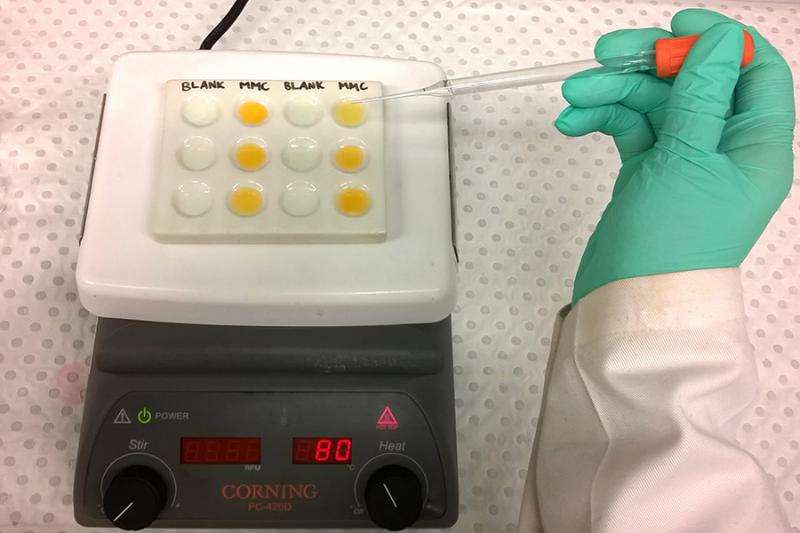Chemist devises on-the-spot test for dangerous 'bath salts' and 'plant food'

You don't need to have watched too many episodes of the US television series Breaking Bad to know that rogue chemists play a critical role in the global trade of illicit and dangerous drugs.
Countless new formulations are devised each year as criminal syndicates try to stay a step ahead of contemporary law enforcement and drug-testing procedures.
UTS PhD candidate Morgan Philp is a chemist on the other side of the ledger – her work lies in creating ways to detect problematic substances at the earliest opportunity.
Working in the Centre for Forensic Science with her supervisor, Professor Shanlin Fu, Ms Philp has developed a quick and simple colour test for synthetic cathinones. It produces a result in five to 10 minutes and can be easily used by frontline customs officers and police to determine if a suspicious substance requires further analysis. The findings are published this month in the journal Forensic Chemistry.
Ms Philp says colour tests already exist for more familiar narcotics such as heroin, cocaine, amphetamines and MDMA. However, synthetic cathinones often pass through unnoticed because testing is lab-based and time-consuming.
"These cathinones are typically made in China or India and sent here in disguise," says Ms Philp. "If police or customs had early warning that a substance was suspicious and should undergo proper instrumental analysis, they would be able to intervene and prevent the drug reaching the streets."
The colour test involves taking a pinhead-sized amount of the substance, adding three reagents, then heating the combination to 80C. A colour change to yellow or orange indicates it is likely to be a synthetic cathinone.
Synthetic cathinones come under the umbrella term Drug Analogues and New Psychoactive Substances (DANPS), which also includes synthetic cannabis. According to the Illicit Drug Data Report 2013-14 from the Australian Criminal Intelligence Commission (ACIC, formerly the Australian Crime Commission), DANPS have been identified in Australia for more than a decade. They are developed to mimic the pharmacological effects of prohibited drugs while staying under the drug control radar.
Synthetic cathinones are based on a man-made formula similar to cathinone, a stimulant found in the African khat plant, and are typically marketed online as "legal" alternatives to illicit drugs. They are often labelled as bath salts, fertiliser or plant food to avoid scrutiny at border controls.
Dr Mark Tahtouh, team leader in Forensic Drug Intelligence with the Australian Federal Police and co-supervisor of Ms Philp's PhD project, says substances such as cathinones are a growing problem for law enforcement agencies.
"They are similar to existing, often legal drugs but are tweaked in the manufacturing process to produce slight changes in chemical structure," says Dr Tahtouh. "That makes them hard to detect to start with and also to identify if they're illicit."
At the same time, their health impacts are largely unknown. The ACIC report says there is little if any testing in manufacture; reported effects include loss of appetite, dilated pupils, tremors or convulsions, insomnia, anxiety, hallucinations and paranoia.
Dr Tahtouh says Ms Philp's test would be a welcome addition to a suite of much-needed rapid-screening technologies.
"Colour tests are quick, easy to perform and don't require specialisation on the part of the tester," he says.
"A positive result doesn't give a definitive result but it does point us in the right direction. If we have someone in custody and are suspicious about a quantity of white powder, for example, we need to act quickly.
"Lab-based instrumental techniques take much longer, and that doesn't include the time to get the substance to the lab and whether other matters may require priority and urgent action."
More information: Morgan Philp et al. Development and validation of a presumptive color spot test method for the detection of synthetic cathinones in seized illicit materials, Forensic Chemistry (2016). DOI: 10.1016/j.forc.2016.06.001
















